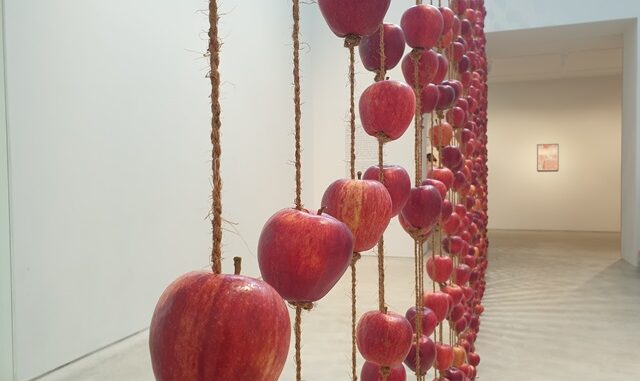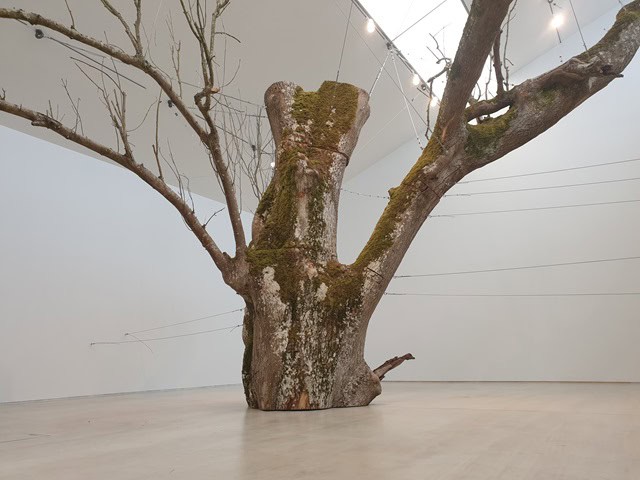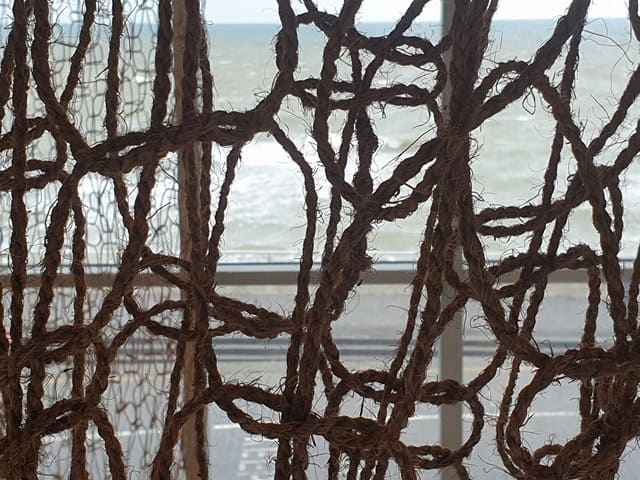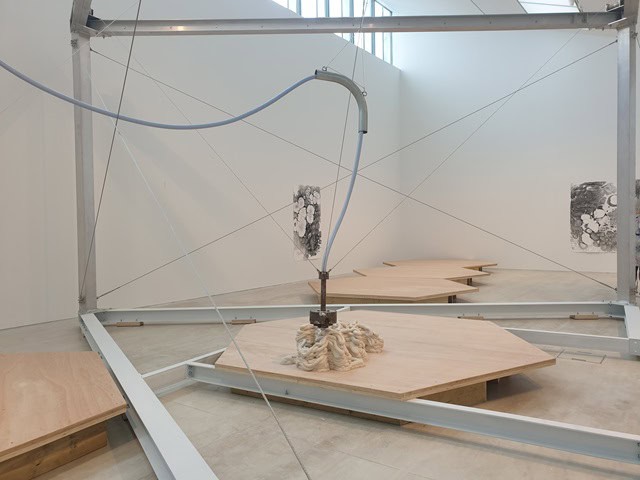
By Dan Thompson
Anya Gallaccio: preserve opens at Turner Contemporary from 2pm tomorrow (28 September) and runs until Sunday 26 January 2025
Some exhibitions at Turner Contemporary feel more ambitious than others. If the last exhibition, of paintings by Ed Clark, was simple and sparse and felt rather undercooked, this exhibition is layered, complex, and – literally – delicious.
Anya Gallaccio has brought together 30 years worth of work, which sounds straightforward – but most of her work uses natural materials that rot and decay. “Two things we wheeled out of crates,” she says, but “everything else we have made here.”
All of this making-in-place has certainly tested Turner Contemporary’s installation crew. The space has been more of an artist’s studio than a traditional gallery for the last few weeks. A giant cork pinboard, covered in photographs, maps, and plans fills a corridor, giving a glimpse of the originals of the works reconstructed here.

The scale of what’s been made is incredible: works often look lost in Turner Contemporary’s high, angular spaces, but Gallaccio has filled them. One gallery has about eight tons of tree, carefully cut down and reconstructed, suspended by wires from walls and ceiling. It’s still at the absolute edge of what the building can hold. It’s the crown of a 200-year-old Ash, felled at Lees Court Estate in Faversham because of Ash Dieback. It’s covered in moss, lichens, and life.
Another gallery is dissected by a curtain of red apples, strung together on hop twine. The apples were all rejected by commercial buyers, because they’re too large for customers. At the end of the exhibition, their seed will be harvested, dried, and planted.
Alongside the exhibition, Gallaccio is planting an orchard of 59 rare apple varieties at Lees Court – these seedlings will go there, leaving a legacy that will last between fifty and a hundred years.

And outside the first floor exhibition spaces, in the Sunley Gallery with its dramatic sea views, Gallaccio has hung hundreds of metres of netting. Made from rough, thick hop twine, it resembles giant fishing nets – bringing together the Isle of Thanet’s duality of sea and agricultural traditions. It was made with the labour of local artists, echoing the traditions of hop farming’s exploitation of cheap, seasonal labour.

If all this work rooted in apples, agriculture and the like feels a bit nostalgic, the largest work in the exhibition is decidedly high tech. The huge north gallery is filled with a metal framework, high-tension cables, and the ducting of a 3D printer, being used to print a vast clay model of a Kent dene hole (or early chalk mine). Gallaccio has worked with Valentine’s in Stoke-on-Trent to develop a chalk-and-porcelain clay which can be fed into the machine’s hopper. It will print for an hour a day, building up the layered model over the next three months.
Meanwhile 2000 gerbera plants will rot and fade, and a vast sea of candles will melt and create a wax landscape. This exhibition, if not about nostalgia, is certainly about time and its passing. The exhibition you see in three months is not the exhibition you’ll see this weekend, although they will have a lot in common.
If some exhibitions can be seen in 30 minutes, this one will take three full months to view.

